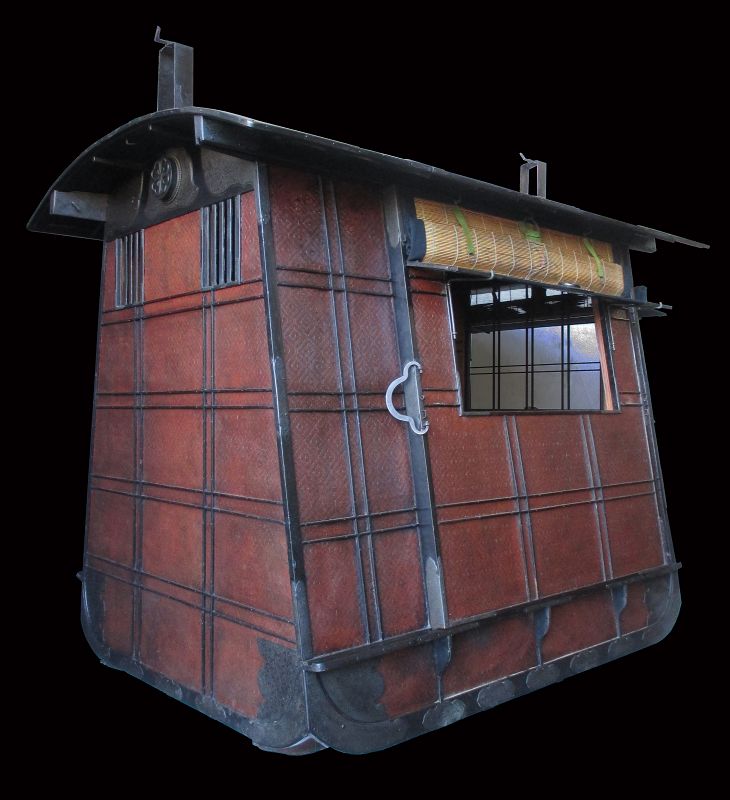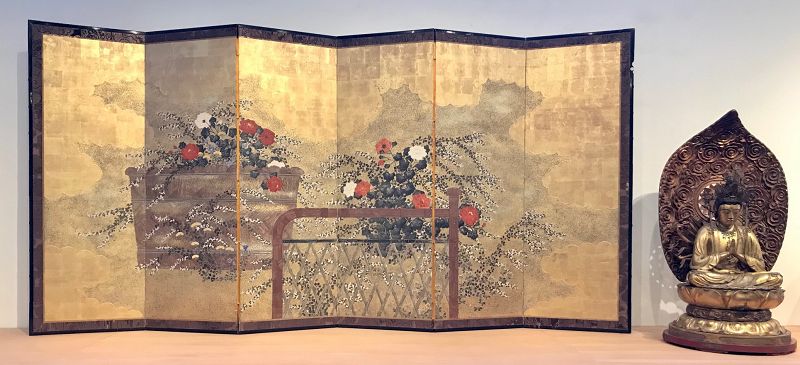Full Size Antique Japanese Norimono Palanquin
The Japanese Norimono Palanquin is completely covered in a rich chestnut woven bamboo. The roof has a slight curve and a section of the roof can lift up for entry. The sedan is trimmed in black lacquered wood in a double lined grid pattern contrasting with the woven material. The three outer window openings provide shade covering of reeded sudaris with black wool borders and copper mounts. The sudari is held erect with copper L-shaped hooks. The sliding doors open to the interior of latticed work in hinoki wood. The floor is covered in hemp (asa) fabric with a built-in secret compartment. The lacquered mini ceiling is latticed and silver papered. The sedan seats one person with a floor cushion, leather arm rest and a black velvet back rest that is mounted on the back wall. The overhead compartment has sliding doors for incidentals and a pull-out lacquered tray held by silk cords.
The Palanquin carrying pole is of lacquered kayaki (elm) wood. The large flat pole is held together with iron band and locking pins attached to the roof carriage. It takes a procession of four to six men to carry the prominent Daimyo. The kamon (family crest name) is embossed in copper and tin.
Date: Edo Period (Early 1800's)
Dimensions: 45 3/4" total height (38 3/4" high just palanquin) x 189" total length (49" long just palanquin) x 32 1/2" deep.
https://zentnercollection.com/product/antique-japanese-norimono-palanquin/


